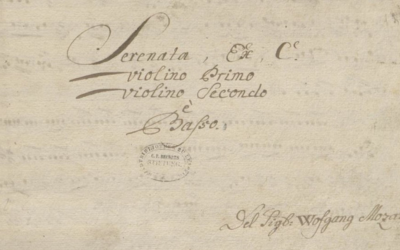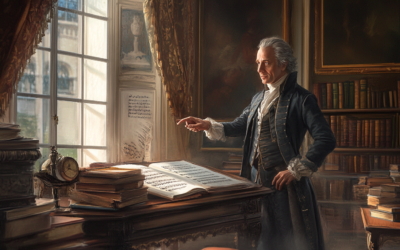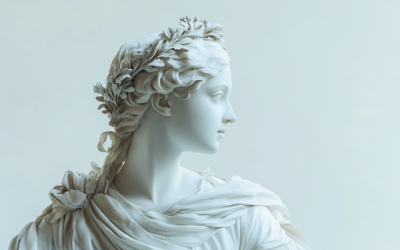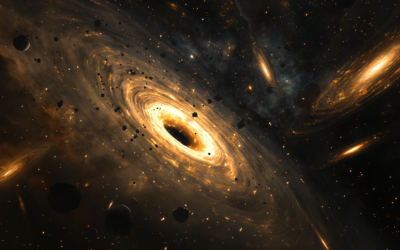Unmasking the Myth
The Cibavit eos and Mozart's Deceptive Legacy
In the realm of classical music, Wolfgang Amadeus Mozart is often portrayed as an unparalleled genius. However, a closer examination of his early works reveals a very different narrative, one in which mastery may be more illusion than reality. A striking example is the motet Cibavit eos in adipe (K. 44), which has been erroneously and romantically attributed to Mozart in various biographies.
Mozart: The Fall of the Gods
This book offers a fresh and critical look at the life of Wolfgang Amadeus Mozart, challenging the myths that have surrounded him for centuries. We strip away the romanticised image of the “natural genius” and delve into the contradictions within Mozart’s extensive biographies. Backed by nearly 2,000 meticulously sourced citations, this work invites readers to explore a deeper, more complex understanding of Mozart. Perfect for those who wish to question the traditional narrative, this biography is a must-read for serious music lovers and historians.
"They have painted a misleading portrait of a composer, as if he were profoundly skilled in counterpoint and polyphony at just fourteen years old, which is absolutely untrue."
Mozart: The Fall of the Gods
At the tender age of fourteen, Mozart faced a composition exam at the prestigious Accademia Filarmonica in Bologna—a moment that should have marked a significant turning point in his career. The exam, however, was a disaster, but he was passed nonetheless, as if the whole charade was designed to bolster a burgeoning myth.
Musicologist Hermann Abert suggested that Mozart had prepared for this farcical examination under the guidance of Giovanni Battista Martini. The reality, however, appears far less impressive. Abert claimed that Mozart had composed Cibavit eos, a supposed masterpiece that demonstrated his ability to compose in the ancient style.
The Illusion of Originality
Abert and other scholars, blinded by their own biases, asserted that Mozart approached the exam with serious preparation, producing the Cibavit, which, according to these scholars, showcased his emerging talent, impressing none other than Father Martini himself. However, a more rigorous investigation reveals that Cibavit was not an original work but a mere copy, beautifully transcribed. It unmistakably echoes the style of late Renaissance composers, a fact that becomes glaringly obvious even to the casual listener.
A Shattered Illusion
Recent discoveries have unveiled that K. 44 is a copy of an earlier work by Johann Stadlmayr rather than an original composition by Mozart. This revelation serves as a powerful testament to the precarious nature of the alleged genius of Mozart. The admiration he has received is built on a foundation of misconceptions and inaccuracies, such as the case of Cibavit, perpetuated by an uncritical acceptance of earlier biographical accounts.
The Mozart establishment and its so-called experts have confused early Renaissance music with Mozart’s compositions, revealing their ignorance of both. They have painted a misleading portrait of a composer who, at the age of fourteen, supposedly mastered counterpoint and polyphony. In reality, this is far from the truth.
Conclusion
The narrative surrounding Cibavit eos challenges us to rethink the stories we have been told and to question the foundations of the mythic genius that surrounds Mozart. This motet does not demonstrate the brilliance of Wolfgang Amadeus Mozart; instead, it exposes the superficiality of Mozart studies, highlighting how easily myths can be constructed and perpetuated in the world of classical music.
You May Also Like
Mozart’s Serenade? A New Discovery? Really?
In Leipzig, what was thought to be a new autograph of Mozart turned out to be a questionable copy. Why are such rushed attributions so common for Mozart, and why is it so hard to correct them when proven false?
Mozart’s K 71: A Fragment Shrouded in Doubt and Uncertainty
Mozart’s K 71, an incomplete aria, is yet another example of musical ambiguity. The fragment’s authorship, dating, and even its very existence as a genuine Mozart work remain open to question. With no definitive evidence, how can this fragment be so confidently attributed to him?
Unpacking Mozart’s Early Education
The story of Ligniville illustrates the pitfalls of romanticizing Mozart’s early life and education, reminding us that the narrative of genius is often a construct that obscures the laborious aspects of musical development.
The False Sonnet of Corilla Olimpica
Leopold Mozart’s relentless pursuit of fame for his son Wolfgang led to questionable tactics, including fabricating a sonnet by the renowned poetess Corilla Olimpica. This desperate attempt to elevate Wolfgang’s reputation casts a shadow over the Mozart legacy.
Mozart’s K 73A: A Mystery Wrapped in Ambiguity
K.143 is a prime example of how Mozart scholarship has turned uncertainty into myth. With no definitive evidence of authorship, date, or purpose, this uninspired recitative and aria in G major likely originated elsewhere. Is it time to admit this is not Mozart’s work at all?
A Farce of Honour in Mozart’s Time
By the time Wolfgang Amadeus Mozart received the Speron d’Oro, the once esteemed honour had become a laughable trinket, awarded through networking and influence rather than merit. Far from reflecting his musical genius, the title, shared with figures like Casanova, symbolised ridicule rather than respect.







